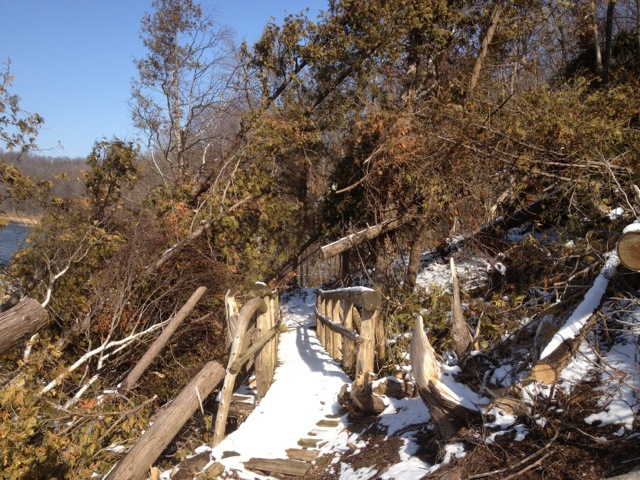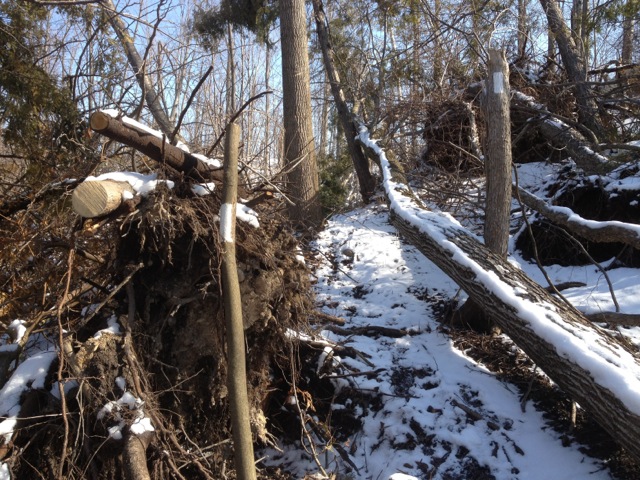WABAKIMI
Ontario is an enormous province. The trip from London to Thunder Bay through the north-country, is a never-ending journey down a tree-lined boulevard. Unless you are young, in a great hurry, or totally unaware of the distance involved, you will need two days to complete the trip. We stopped overnight at Wawa and finished the next day at Phil’s house. (uncle) Phil Cotton has undertaken the Herculean task of mapping the Wabakimi wilderness, an area the size of Prince Edward Island. At any given time, four volunteers are the only people in the park, cutting trails, grooming existing portages, and clearing campsites. This is a lonely and beautiful wilderness.

John with stylish ‘Canoe Hat’
At Phil’s house John and I expected a large single room stuffed with outfitting gear, and a corner for sleeping. Wrong…a very orderly living room and busy kitchen. In the yard, a roomy and very tidy shed filled with paddles, safety jackets and packs. Sarah his assistant, met with us and we soon found out that Phil likes things just so, his way or the highway.
After a restful night, John and I embarked on the final road portion of our adventure, a 250 km winding road to Armstrong and the Huron Outfitters. There Ernie, Donna and Mitch, met us. Mitch would be our very eager and capable young pilot for the adventure. We packed our gear into the Beaver floatplane and headed for Peninsular Lake and the camp of Huron Air. Having a warm cabin for the first night was a plus that we had not expected, but was greatly appreciated by all.
The full compliment for this 8-day assignment was as follows: Phil Cotton, John Howitt, John Holmes and myself. Phil reviewed the maps with us and filled us in on the details of our assignment, which had all the characteristics of a military campaign: “paddle hard, clean campsites, repair campsites and portages, and cut new portages where required.”

The next day we began our trip by paddling across the lake and heading out on the Atwood River, destination Gowies Bay. Our first campsite needed a fair bit of cleaning and opening up to accommodate two tents. We soon realized that we had much to learn. Packing a canoe packsack, for one, pitching and folding a tent, erecting the shelter tarp, preparing the site, and so on. I have camped all of my life, but this was different. We had to get used to dancing to the tune of a different piper.
Phil is an amazing man with many years working as project organizer and wilderness guide; competent and, as such, made us feel safe.
The next day we left around noon and headed down some relatively easy, fast flowing water. When we arrived at the portage we were introduced to the reality of the condition of campsites and portages in this pristine wilderness. It could only be describes as ‘filth’ and total neglect. We were greeted by an aluminum powerboat and outboard motor, a pole leaning against a tree with hip-waders hanging from it, a cooking pot, a bear-trap, and a moose leg stripped of all meat. We filled an industrial size garbage bag with the mess we found, and it became the first of 4 massive bags of garbage that we dragged with us, all the way back home. The portage had been cleared to handle a York Boat, meaning that the entire distance was covered with rollers (four foot lengths of 5 inch tree sections). At the end of the portage was an aluminum canoe; the typical setup left behind by the Indian hunters in this part of the bush. After John and I measured the length of the trail, 30 m sections at a time, we continued our trip to Gowies Bay and camp number two.
We set up camp just in time to be safely tucked away, when a thunderstorm raged around us for the next hour. Looking at the maps we were told that we were actually east of Wabakimi and that our destination was the Albany River; a revelation that was unexpected, but welcomed.
The following day proved to be a new and very physical challenge. Phil told us that we were going to build a portage where none existed before. He walked over the ground to determine the best route and then proceeded to mark the trees that required removing. After considerable, backbreaking work, it resulted in a beautiful portage, making us proud of our accomplishment, (and Phil’s chain saw). It was only 88 meters long, but it served the purpose of getting around some dangerous, rocky rapids.
The next day we paddled a patch of rough water that we negotiated with relative ease, followed by a 556-meter portage, a challenge after a day of robust paddling. Upon arriving at a campsite, we realized that it was not suited for two tents. It meant that we would have to clear an additional pad for the second tent. Discouraged by the prospect of a long and difficult ‘clearing’ job, we decided to check out a second site on the lake; we settled on it for the night. We were a bit nervous when we discovered bear scat, right in the middle of one of the tent pads. “So what”, said Phil, “when you’re tired you’ll sleep in any poop”, and we slept like babies. Following a hardy breakfast, next morning, we returned to the portage we had crossed the day before to clean it out, and to find the water purifier that had carelessly dropped from my pack. After some anxious searching, I found it and made sure that it would never get away again.
A note about the packs we carried. In the beginning I tried to handle some of the heavy ones, but eventually found it too difficult. I have had a couple of back injuries in the past, and they quickly reappeared. Everyone understood, and I carried a lighter pack, when possible.

Fishing in this wilderness is the best in the land. Pickerel and pike everywhere. John and I landed eight Pickerel in 15 minutes. “Catch them, you eat them.” I must say—sometimes you can have too much of a good thing. Phil still prepares fish the old way, breading them in flour and corn meal, lemon pepper and lots of butter (margarine in this case). Sure is good.
Sometimes when the going gets rough, accidents will happen. While carrying the canoe with John across treacherous rocks, I slipped into a hole and bashed my shin into a boulder, resulting in a chicken egg size bump and tear on my shin. It is slowly returning to normal, but I will have a souvenir for some time.
Thursday Aug. 23rd was a day none of us will soon forget. It was hot and we paddled non-stop all day. We had the choice of going down to Frenchman’s rapids or go in the opposite direction to Triangular Lake. We picked the latter and were rewarded with a 26 km paddle on the Albany River, in brutally hot sunshine. It is a bit deceptive to call it a river, since the Albany often turns into a massive lake several km across. Paddling up the middle is only advised on a calm day, which we were lucky to have had. So far we had not seen any fellow travelers, and were somewhat shocked to see two canoes coming at us at a menacing pace. I did not feel good until they were close enough to see their faces. One of the chaps shouted out “Phil Cotton, I told everyone that we might just run into you. What a surprise.” The paddler of the party of four, who had just identified Phil, was the author of an article I had read at Phil’s house in Thunder Bay, in a Canoe and Kayak magazine. Such is Phil. Now there were 8 paddlers in the 2,000,000-acre park.
Later that afternoon we arrived at our final destination on Triangular Lake, the place where our trusty Beaver floatplane would pick us up in two days. But not before we had paddled another 4 km to a portage that needed some serious work. Our trip was coming to an end, just the way it should. Spectacular sunsets, restful nights, excellent fishing and the never ending ‘story telling’ that is inevitable when four guys, with love for the bush in common, get together. We made new friends and strengthened old bonds. Is there anything better?
A two-hour delay in the scheduled departure made the morning wait for our flight home a bit tedious. Thunderstorms had delayed the plane’s departure, but eventually it did arrive. As promised, two cans of cold beer for the return flight, and enough tall tales for a lifetime. The Wabakimi Project has had over 150 volunteers work on the park and surrounding lands since ‘uncle’ Phil started it. The ‘Friends of Wabakimi’ has been created and should guarantee a full set of maps, as well as continuous maintenance of trails and camping sites, for the years ahead.

John and Fred at Huron Air
Both John and I agreed that it was well worth the effort and the price. Wabakimi will never be as crowded as the existing parks in this country, but it will always be a destination for those adventurers who want to enjoy a true wilderness experience – another wish off my bucket list.

43.003122
-81.297672































